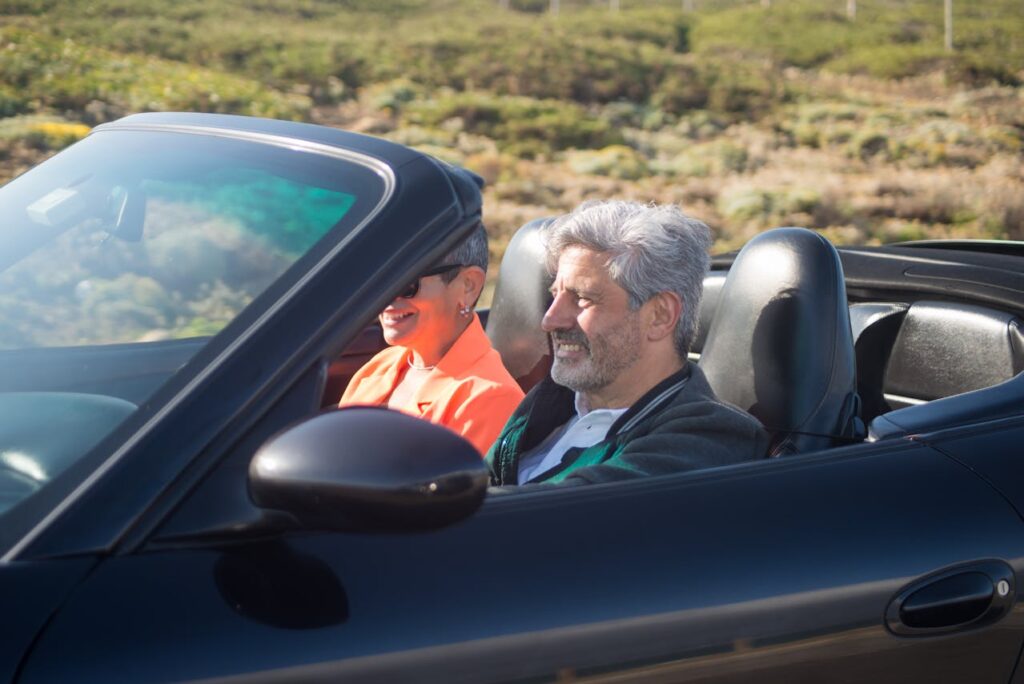
According to the U.S. Environmental Protection Agency, the average car weighs around 4,094 pounds. Now, imagine commandeering one when you’re 60 to 80 years old. You’re sharing the roads with drivers tearing around at well over the speed limit, and drug-impaired, distracted, or sleepy motorists. Welcome to 2024 and the skyrocketing risk to all drivers, but particularly to the elderly.

We, seniors, lose independence when our car keys are taken away either by relatives or failure to pass a driver’s test at the DMV. Particularly in a state such as California where public transportation in certain areas is almost non-existent. So, what’s left? Walking, asking a family member or friend to take you to the doctor’s office, calling a cab or Dial-a Ride, or riding a bike. Now, you can no longer settle into the driver‘s seat of your car confident that you’ll reach wherever you’re going. When you’re deprived of that mobility, it can be devastating.
It doesn’t always have to be this way. If we have all our faculties, including adequate reflexes, mobility that allows us to look over our shoulders when merging into traffic or changing lanes, vision correction and hearing aids as prescribed, good judgment, and the ability to concentrate, we can drive safely. The one circumstance, though, under which a person should not drive is if he or she has dementia or other brain disorder that affects judgment.
Protecting yourself, your passengers and others is a matter of honing “defensive” driving skills, and what follows are tips to ensure your safety and that of others:
- When approaching a red light, slow down and stop several feet from the vehicle in front of you. If you’re hit from behind it can drive you into the vehicle ahead, and the law will likely consider it your fault.
- The same goes for parking at a crosswalk. Stop several feet back, so if the motorist behind bumps you hard and pushes you a few feet, you won’t hurt or kill pedestrians in the crosswalk.
- Take a refresher driving course. It’s worth the fee, and you may be surprised at the number of rules of the road you’ve forgotten.
- Pedestrians can be badly injured by motorists making right turns. When preparing to turn right at a red light, don’t just glance to the left but look at the crosswalk on your right.
- Canyon roads and two-lane highways are notorious for speeding and tailgating drivers who may try to coerce you into moving to the shoulder so they can get by. Speeders don’t care about your safety. If it’s legal to do so, slow down and pull over, but if not continue until it’s safe to roll into a turn-off or slow lane.
- Always look over your left shoulder before you leave a parallel parking spot. If you have a camera on your trunk have a look at that before you pull out. You may see a car behind you parked too close. Don’t just rely on your mirrors!
- When leaving a parking spot in a shopping mall, ease out slowly; Another vehicle may be parked in an awkward position waiting for your spot. Invariably, a pedestrian will be walking behind you. That’s why I park in areas a little further from the mall. It’s worth it, and you get the exercise.
Lastly, always be aware not only of the physical act of driving but where you are in proximity to other drivers. Take care to observe road signs and stop lights.

We want to hear from you, so feel free to share tips, ideas, and resources for seniors with Grannybooster. Email me, Maris Somerville, at [email protected]


Leave a Reply